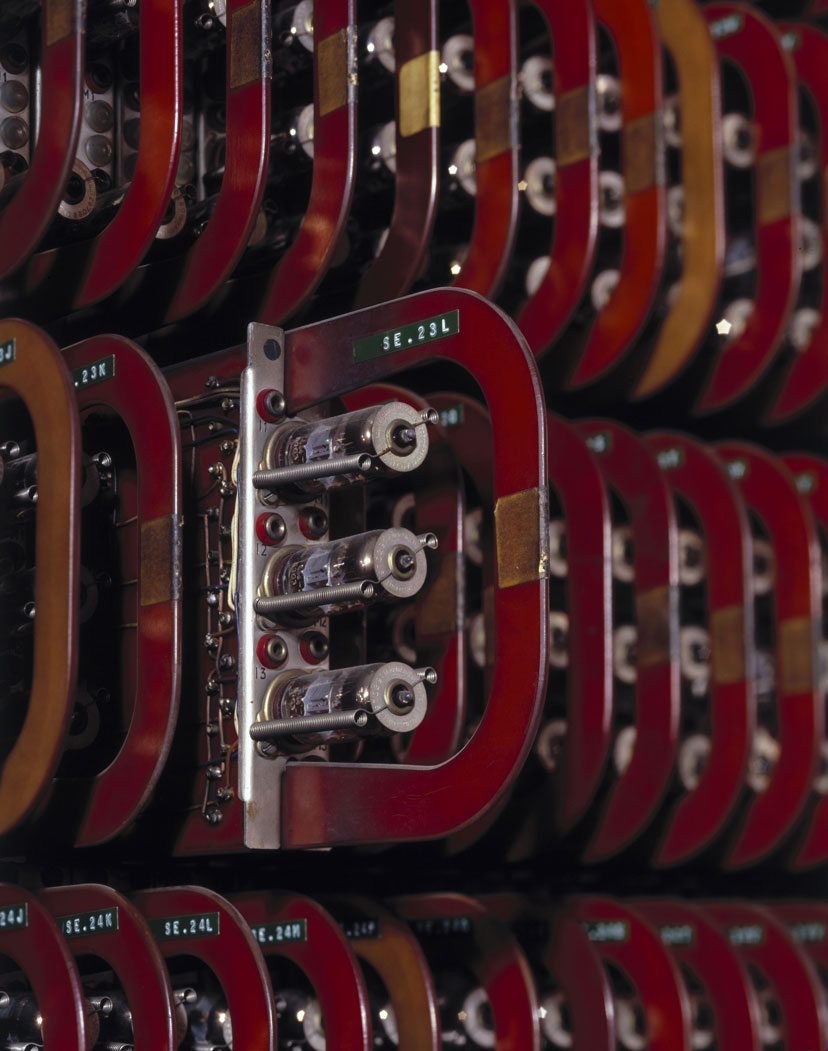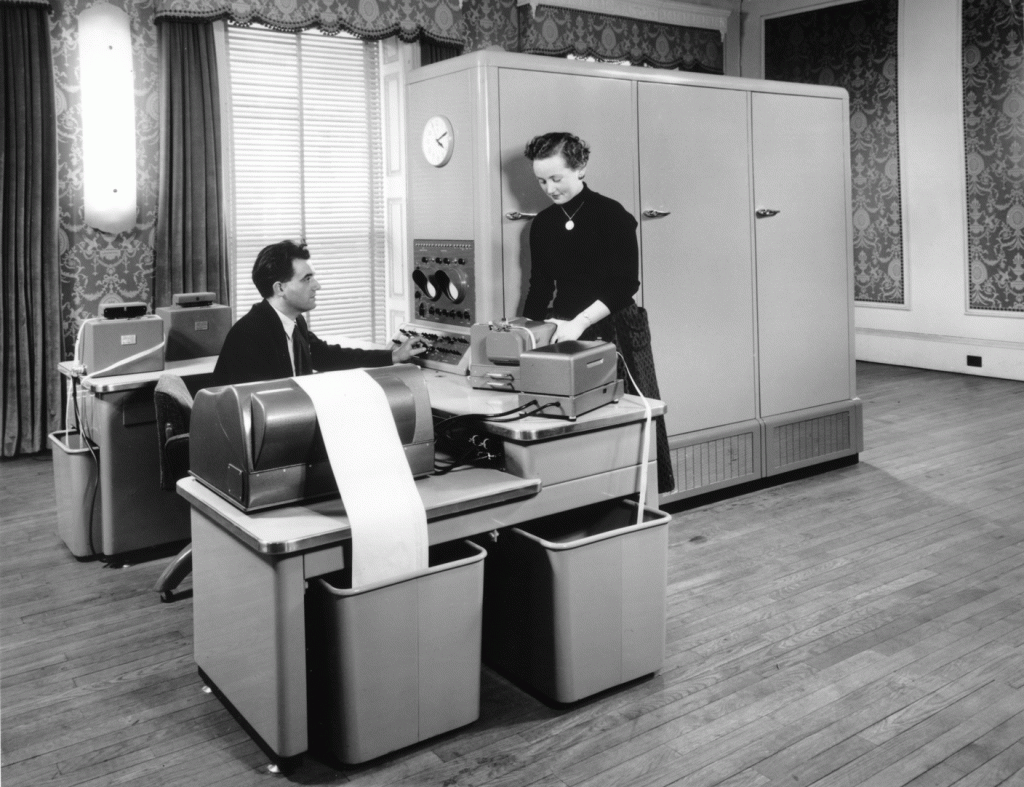Surrounded by paper tape readers, paper tape punch and teleprinter, I am in control of an early electronic computer named Pegasus. The imposing array of switches, lights, knobs and display screens, gives me command of a powerful yet responsive machine. There is a lot of noise from the cooling air blowers, and occasionally the machine emits strange sounds from its loudspeaker indicating the progress of an application program. This is how the original operators of Pegasus would have felt in the 1950s.

Sometimes an operator would be the person who actually designed and wrote the program, taking hands-on control to ensure the program worked correctly.
Operators became wizards at manipulating the control switches to direct what the machine does, as well as monitoring the binary data shown on the cathode ray tube screens.
While the program was running, they rolled-up any punched-paper tapes to be kept, or glanced up at the clock to write the next log-book entry. There was a pervading feeling of warmth, comfort and order.
The Ferranti Pegasus computer was developed in the early 1950s by a team of former Elliott Brothers Ltd engineers using a technology pioneered in the Elliott/NRDC 401 computer.
The engineering of Pegasus is outstanding. It is assembled from hundreds of plug-in electronic modules about the size of a paper-back book which contain two or three valves (vacuum tubes – pre-dating the use of transistors or microprocessors).
Some of these modules are used as the internal memory of the computer but the main memory is based on magnetised spots on the surface of a rotating drum, similar to a modern day magnetic disc drive. Data input and output is via 5-track punched-paper tape. No typewriter keyboard or display screen!
Pegasus was the first “user friendly” computer, and about forty Pegasus systems were sold, between 1956 and 1962. Scores of programmers and users of the machine have commented on the ease of programming and operation.
A fundamental part of Pegasus was a simple operating system, a set of routines called Initial Orders which was stored permanently in a write-protected area of the drum.
Pressing the “Start” key caused the Initial Orders to be executed, and they gave the programmer facilities for inputting programs and data, for debugging, for assembling large program systems from sub-sections and libraries, and so on.

Pegasus and the Science Museum
The Science Museum Pegasus, serial number 25, has been re-located at least eight times in its life, including a period in Sweden. The museum acquired it from UCL London in 1983 and it was initially displayed in Manchester where it was occasionally maintained by a colleague and myself. After a couple of years the machine moved back to London.
When the Computer Conservation Society was formed in 1989, a group of expert volunteers re-commissioned and demonstrated Pegasus at the museum. It was put on prominent display in the Computing gallery in 2000, where for the first time in its long life, Pegasus was on view to the public. It is a tribute to the quality of the original engineering that Pegasus survived this repeated stripping down, moving, and re-assembling.
For nearly a decade Pegasus was demonstrated every fortnight, but in 2009 a fault with the machine required it to be shut down and Health and Safety considerations subsequently stopped further operation. This historic, 60-year old computer continues to be an important artefact in the Science Museum’s Computing and Data Processing collections.
Chris Burton is a volunteer at the Museum who helps maintain and run Pegasus, one of the oldest computers in the world. Chris is a member of the Computer Conservation Society.
For more information on Pegasus, read “The Pegasus Story” by Simon Lavington published by the Science Museum. In 2015, the Computing gallery will close, reopening in late 2016 as the new Mathematics gallery. You can discover more about the history of information and communication technologies in the Information Age gallery, opened in October 2014.
4 comments on “The Pegasus Computer”
Comments are closed.
Which is the last weekend that we can still visit the Computing Gallery? Thanks!
Hi Ed, Thanks for asking. We don’t have an exact date just yet, but you can see the gallery until August. Hope that helps.
Thanks Will – so the whole of August is still OK for a visit?
Hi Ed, Before the 19th August is best. Hope that helps.